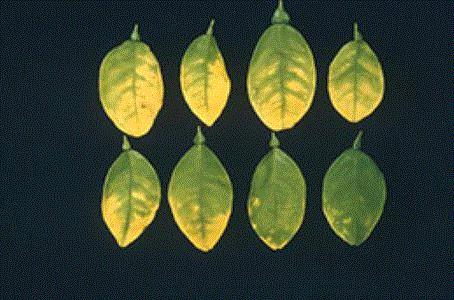September Farm Update

One of my favorite armloads from this week.
It is beautiful on the farm right now. September is the month we all dream about. All the summer hustle and struggle to water, weed, and plant pays off. While we are harvesting Gator-loads of dahlias, we are sowing more snapdragons, stock, anemone and ranunculus for early winter production. One of our missions is to make year-round Michigan-grown flowers a reality. We’re really excited to see how our early successions of anemone and ranunculus finish. I hope they will make Thanksgiving sales!
I am also assessing our hiring needs for next spring and summer. Although there is so much going on, I think it is important to take stock in the season at hand so that we can adequately plan and fix some of the staffing issues we had earlier this season. Tater and I are crafting new job descriptions in hopes we can recruit the talent we need, when we need them next season. It’s a very utopian thought, I know. Anyone in the green industry knows how hard adequate staffing is. But you don’t know if you don’t try. This is a critical step for our little farm to keep growing.
In this edition of Bloom Beat, Tater prepared a little brain teaser to test your horticulture acumen! Read on to learn more. With all that being said, let’s talk shop!

Pop Quiz!

Alright friends, it’s time to put on your plant diagnostician cap. In this edition of Bloom Beat, Tater and I thought we would give you a little brain teaser. This photo is from our very own farm. This chrysanthemum needs help!
There’s a small 4 ft. x6 ft. patch of chrysanthemums in our greenhouse with distorted foliage on the leaf tips. Here are some hints: these are grown in mineral soil, and the house currently has 40% shadecloth on it. When nights get below 60F, Tater and I always close the greenhouse.
I’ll give you the answer at the end of the article, but as you read on, keep this photo in mind.
2025 Insecticide, Miticide and Fungicide Guide
Are you looking to fine tune your IPM program? Look no further! The 2025 Insecticide, Miticide and Fungicide guide is available now!

The folks at GrowerTalks and BASF created this incredible resource to help keep your crops healthy and profitable. This guide is chock full of tips and tricks for proper application of pesticides and even diagnostic tips.
Read up on downy mildew before it devastates your crops, find tips on foliar disease prevention, and see how leading growers are implementing sustainable practices in their IPM programs. You’ll also find the latest info on preemergence herbicides, plus application techniques to optimize their efficacy.
Be sure to bookmark this LINK. There will soon be a Spanish version of this available, too!
Answer!
And the answer is ... nutrient deficiency, specifically boron.
One of the floriculture technical support experts was at our farm last week and diagnosed the problem. It pays to have a well-trained eye around, especially when it arrives just in the nick of time!
At first I was perplexed, because it was only in a small area. But since our soil isn’t homogenous in our greenhouse, it makes sense that we may have a patch of plants with nutrition issues.
Why is boron important? Boron is a micronutrient, with macro implications if not available in the proper quantity. Boron plays a role in many metabolic processes in plants, including cell wall formation and maintenance, membrane integrity, nutrient transport, hormone regulation and root growth. As you can imagine, these are very important things for plant growth and development!
The challenge with boron deficiency is that it is a sign of pH creep in the substrate. Our water on the farm had high alkalinity from the start. All of southeast Michigan is on a limestone deposit. There is also a new stone quarry down the road from our farm, and the increased mining this year may have changed our water quality over the last six months since I had our water tested.
This makes an already challenging water situation worse. Excess calcium can inhibit the uptake of boron, meaning Tater and I need to get our water tested ASAP! My best guess is that the properties of our water has changed as a result of the stone quarry and we didn’t account for this change in our production plan. After chrysanthemum season, Tater and I need to come up with an aggressive, well-thought-out game plan to prevent and/or fix pH creep in all of our greenhouses.
Do any of you have experience in managing pH in long-term substrates? Tater and I are all ears! Send us your ideas
HERE. I’m hoping some applications of Borax will remedy the chrysanthemums (more on this in a minute). I’ll keep you guys posted!

More Helpful Info about Boron

Boron toxicity in citrus. Be sure to calculate your boron aplications correctly!
Photo from University of California.
Our friends at Sakata sent us a helpful handout from Blackmore Company about boron deficiency and how to fix it. It is important to remember that boron is a micronutrient, meaning more is not better. Actually, more can be detrimental. Below is the handout from Blackmore Company. Keep this in your favorites, it is a great resource!
Role in plant nutrition
Boron is necessary for the translocation of sugars and may enhance respiration. It is involved in the reproduction of plants, the germination of pollen, water relations in cells and intake. It also tends to keep Calcium in a soluble form and may act as a regulator of the K/Ca ratio within the plant. Furthermore, Boron may be involved with nitrogen metabolism and with oxidation-equilibria in cells. Major sources of Boron are Borax (11.5%), Solubor (20.5%) and Boric Acid.
Deficiency symptoms
Water levels less than 0.25 ppm have been associated with boron deficiency; in excess of 0.45 toxicity. In the foliage, boron should range from 30-150 ppm; in the water less than 0.5 ppm. Water boron levels of 0.25 ppm and higher may be toxic to boron-sensitive crops (poinsettias, New Guinea impatiens, foliage plants). Boron is not available in a chelated form and is readily available below 6.0 pH. Therefore, it is available in a narrower pH range than are other microelements. Boron is also easily leached from the soil and competes with calcium for absorption. Major deficiency symptoms include:
- Deep dark green foliage similar to excessive chemical growth regulator
applications
- Leaf curling, crinkled or puckered leaves
- Short internodes, tip abortion
- Leaf-edge burn with chlorotic young foliage
Applying 0.25 ppm of boron at each irrigation is the best way to avoid a deficiency. This is especially true when heavy leaching occurs in between fertilizer applications. Growers often apply low doses of nitrogen to crops using pre-blended fertilizer formulations.There is a direct correlation between the rate of nitrogen applied and the amount of microelements supplied.
Jack’s Professional 20-10-20 Peat Lite
100 ppm Nitrogen yields 0.10 ppm boron
200 ppm Nitrogen yields 0.20 ppm boron
Peters Miracle-Gro Excel 15-3-20 Pansy Special
100 ppm Nitrogen yields 0.20 ppm boron
200 ppm Nitrogen yields 0.40 ppm boron
Greencare 13-2-13-6 Ca-3 Mg Plug Care
100 ppm Nitrogen yields 0.125 ppm boron
200 ppm Nitrogen yields 0.25 ppm boron
Solubor (20.5% B) - 0.18 grams per 100 gallons / 0.05 grams per 100 liters = 0.1 ppm boron
Borax* (11.5% B) - 0.33 grams per 100 gallons / 0.1 grams per 100 liters = 0.1 ppm boron
*20 Mule Team from Dial Corporation
Be sure to take into account any available boron in the irrigation water, which must be subtracted from the target ppm.
Microelements vs. NPK
Microelements are analogous to engine oil in that one never wants to run dry. NPK are analogous to the gasoline in an engine. It is best to apply microelements, especially boron, at each irrigation when not applying NPK. A good overall recommendation, including any amount present in irrigation water, is listed below.
Fe* – 1.0 ppm
Mn* - 0.5 ppm
B - 0.25 ppm
Zn* - 0.5 ppm
Cu* - 0.25 ppm
Mo - 0.01 ppm
*chelated
Pre-mixed trace element packages similar to above or custom blends are available from Blackmore Company, 800-874-8660.

Enthusiastically!
Lindsay Daschner (and Tater)
Editor-at-Large—Bloom Beat
Owner—Forget-Me-Not Farms
This email was received by 6,313 of your fellow fresh-cut flower growers!
If you're interested in advertising in Bloom Beat, contact Kim Brown and she will hook you up!